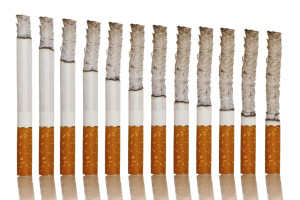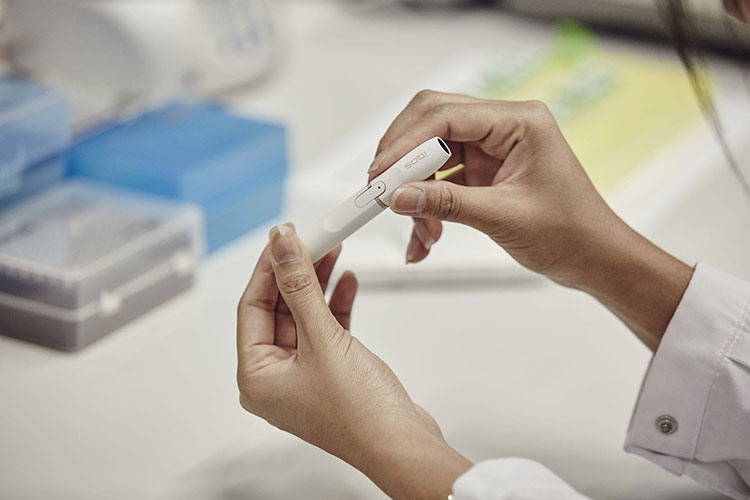The US Food and Drug Administration has issued a Federal Register notice announcing a meeting of its Tobacco Products Scientific Advisory Committee (TPSAC) to discuss scientific issues related to the modified risk tobacco product (MRTP) applications submitted by R.J. Reynolds Tobacco Company for six Camel Snus smokeless tobacco products, which are currently under scientific review by the FDA.
The meeting is scheduled for September 13-14 at the FDA’s White Oak campus.
The role of the TPSAC is to review and evaluate scientific issues, including safety, dependence, and health issues, relating to tobacco products and provide advice, information, and recommendations to the FDA.
By law, the FDA must refer MRTP applications to the TPSAC, and the TPSAC must report its recommendations on the applications. In providing their recommendations, TPSAC members may not necessarily read the entirety of the applications.
The FDA reviews and makes the determination as to whether to authorize an MRTP, and is not required to follow TPSAC recommendations, including votes. However, the FDA takes into consideration TPSAC members’ insights, along with public comments and other information made available to the agency, before making a determination on any MRTP application.
Before the meeting, TPSAC members receive materials prepared by the FDA and the company that provide context to inform TPSAC members’ discussions, including those materials that relate to specific issues and questions from FDA staff that arose during the agency’s scientific review of the MRTP applications.
The FDA posts all materials provided to the TPSAC (redacted in accordance with applicable laws) on the agency’s website two days before the relevant meeting; so the agency intends to post the materials for the September TPSAC meeting on the FDA website on September 11.
During the upcoming meeting, representatives from R.J. Reynolds Tobacco Company and the FDA’s Center for Tobacco Products’ Office of Science will present information about the company’s MRTP applications currently under FDA scientific review. TPSAC members may then discuss available scientific evidence related to issues and questions posed by FDA about the applications. During this discussion, TPSAC voting members may vote on specific issues and questions, or on other topics arising during the committee’s discussion.
TPSAC meetings include also time for in-person public comments; and instructions on how to submit public comments to the TPSAC are to be found on the Federal Register notice.
Requests to present an oral comment at the September meeting must be received by August 16, while written comments related to the meeting must be received by August 29.
These deadlines apply only to the TPSAC meeting and do not apply to the public docket for R.J. Reynolds Tobacco Company MRTP applications. There is currently no deadline for public comments on these applications.
Category: Harm Reduction

MRTP applications meeting

What's not to like?
Vaping helps people stop smoking – and can even encourage them to quit when they aren’t looking to do so, according to new research from the UK’s University of East Anglia (UAE).
In a piece on the eurekalert.org website, the University said its study had shown that smokers who switched to vaping might be better able [than those using other quit methods] to stay smoke-free in the long term.
It had shown, too, that even people who weren’t looking to stop smoking had eventually quit because they found vaping more enjoyable than smoking.
“E-cigarettes are at least 95 percent less harmful than tobacco smoking, and they are now the most popular aid to quitting smoking in the UK,” said lead researcher Dr. Caitlin Notley of the UEA’s Norwich Medical School.
“However, the idea of using e-cigarettes to stop smoking, and particularly long-term use, remains controversial.”
The research team carried out in-depth interviews with 40 vapers and, in doing so, found that vaping might support long-term smoking abstinence.
“Not only does it substitute many of the physical, psychological, social and cultural elements of cigarette smoking, but it is pleasurable in its own right, as well as convenient and cheaper than smoking,” said Notley. “Our study group also felt better in themselves – they noticed better respiratory function, taste and smell.
“But the really interesting thing we found was that vaping may also encourage people who don’t even want to stop smoking, to eventually quit.”
While most of the sample group reported long histories of tobacco smoking and multiple previous quit attempts, a minority (17 percent) said they enjoyed smoking and had never seriously attempted to quit.
“These were our accidental quitters,” said Dr Notley. “They hadn’t intended to quit smoking and had tried vaping on a whim, or because they had been offered it by friends. They went on to like it, and only then saw it as a potential substitute for smoking.”
“Many people talked about how they saw vaping …as a no pressure approach to quitting,” she said.
UK in optimistic mood
The mood is optimistic in vape shops across the UK where new research commissioned by Philip Morris Limited has found that vape-shop owners and managers expect store sales to grow by about 13 percent on average this year.
The findings come from a study of attitudes and expectations of 101 vape-shop owners and managers across the UK conducted by Brand Potential.
Other findings of the research include:- 83 percent of vape shop owners and managers expect the industry to grow in the coming year and 47 percent expect to increase employment levels over the same period.
- Online sales are expected to grow by about 10 percent.
- 77 percent of vape-shop owners interviewed expect to expand their operations over the next three years, including opening another shop.
- To increase sales, 71 percent are considering investing in staff training to improve product knowledge and 67 percent are considering offering a wider range of alternatives to smoking.
“UK vape shop owners are right to be confident about the future,” said Matt Tisdall, Philip Morris Limited’s head of sales. “As more alternatives to cigarettes become available, vape shops can play a vital role in educating smokers, who would otherwise continue to smoke, about the full range of options available to help them switch.”
When the survey subjects were asked about helping smokers looking to switch to vaping, the research found that:- 94 percent of vape shop owners and managers believe that support from store staff is most helpful.
- 81 percent believe also that having a wide range of products is most helpful.

Smoking in rapid decline
The incidence of smoking in the US dropped to 13.9 percent last year, from 15.2 percent the year before, according to preliminary figures from the Centers for Disease Control and Prevention.
An Associated Press story quoted K. Michael Cummings of the tobacco research program at the Medical University of South Carolina as saying that there hadn’t been much change during the previous two years, but that it was clear there had been a general decline and that the new figures showed the decline was continuing.
“Everything is pointed in the right direction,” including falling cigarette sales and other indicators, Cummings said.
In the early 1960s, 42 percent of US adults smoked. At the turn of the millennium, the smoking incidence was about 23 percent.
The story quoted ‘experts’ as saying that anti-smoking campaigns, cigarette taxes and smoking bans were combining to bring down adult smoking rates.
The launch of electronic cigarettes and their growing popularity was said to have ‘likely played a role’ in the decline.
Meanwhile, teenagers too are shunning cigarettes, with figures out last week showing that smoking among high-school students down to nine percent. About 13 percent of high-school students use electronic cigarettes, while the figure for adult use of these devices in 2016 was three percent.
HNBs offer positive change
Philip Morris International said yesterday that a clinical study had proved that switching to its heat-not-burn (HNB) device could reduce the health risks posed by smoking combustible cigarettes, according to a story in The Korea Herald.
PMI’s study results come two weeks after the South Korean health authorities released the result of their study, which found that HNB devices to be equally harmful as combustible cigarettes, if not more harmful.
According to PMI, its latest clinical test was conducted on 984 smokers of combustible cigarettes over the age of 30 in the US.
As part of the test, it asked 488 people to switch to IQOS for six months.
The clinical risk assessment related to diseases associated with heart, lung and organ systems changed positively in the case of those who switched to IQOS, compared to those who continued smoking conventional cigarettes.
“The latest research was conducted to demonstrate clinical, biological and functional health changes in smokers switching to the HNB product,” said Manuel Peitsch, chief scientific officer at PMI. “The result has proven that the HNB product can reduce the risk of smoking-related diseases.”
Taken to the cleaners
France’s junior environment minister Brune Poirson has warned the tobacco industry that the government will force it to get involved in the collection and elimination of its waste if it doesn’t come up with alternative solutions by September, according to a Reuters story relayed by the TMA.
Paris alone collects and disposes of 350 tonnes of discarded cigarette butts annually, despite the provision of wall-mounted ashtrays and the threat of a €68 (US$80) fine for those caught littering.
The ministry estimates that 40 percent of the 30 billion butts thrown away in France every year end up on beaches and in forests, rivers and the sea. “The ministry will not be brutal on the method, but will be firm on the objectives,” said Poirson. “Pollution is major, so the commitments cannot be minor.
A battle seems to be looming.
British American Tobacco’s public affairs director Eric Sensi-Minautier was quoted as saying that it was not up to companies, smokers or citizens to pay, via additional taxes, for the cost linked to the clean-up of cigarette butts.
And Imperial Brands said that it already encouraged smokers to dispose of butts responsibly.
More evidence on IQOS
Philip Morris International announced today the ‘positive results from a new clinical study on IQOS, the company’s most advanced smoke-free product’.
‘The Exposure Response Study (ERS) measured the biological response of people who switch to IQOS for six months compared with continued smoking,’ the company said in a note posted on its website.
‘The study met its primary objective, demonstrating that after six months, eight measures of biological response (the primary clinical risk endpoints) improved in those who switched to IQOS.
‘PMI’s Scientific Assessment Program has rigorously tested IQOS over more than seven years and supports that switching to our most advanced smoke-free product is likely to present less risk of harm than continuing to use cigarettes. ‘Numerous aerosol chemistry and physics measurements demonstrate that IQOS aerosol contains an average of 90-95 percent lower levels of harmful constituents. Our results support that these reduced emissions translate to reduced toxicity in the laboratory and to reduced exposure in clinical studies.
‘The ERS contributes an important new facet to PMI’s research: it begins to explore the impact of these promising results by measuring the biological response of people who switch to IQOS compared with those who continue to smoke.’
“These results are very encouraging,” said Frank Luedicke, PMI’s chief medical officer. “We believe this study on IQOS is the first ever clinical study of this magnitude to directly assess the risk-reduction potential of a smoke-free product in people who switch to it.
“Everything we’ve seen, including these new results, continues to point in the direction of risk reduction.
“We are sharing the results with the scientific community at multiple conferences over the next few months and we look forward to their feedback.”
PMI said that on June 8 it had submitted the ERS results to the US Food and Drug Administration to add to the extensive body of evidence already presented to the agency in support of PMI’s pending application for authorization of IQOS as a modified risk tobacco product.
‘FDA is in the process of reviewing both PMI’s modified risk tobacco product and our premarket tobacco applications, but has not yet reached conclusion,’ it said.E-liquids – the reality
The effectiveness of Australia’s vaping laws is being thrown into question with data showing illicit nicotine is making its way into retail stores, according to a story by Flint Duxfield for mobile.abc.net.au.
Data from the New South Wales Department of Health suggests people could be unwittingly buying e-liquids containing nicotine, even though it is illegal to sell such liquids in Australia.
In testing conducted since 2015, the Department found that 63 percent of e-liquids labeled as nicotine-free contained nicotine.
The Department was unable to provide a breakdown of the concentrations of the nicotine, but of the testing it conducted of all e-liquids, about half contained between 3 mg/ml and 20 mg/ml. [20 mg/ml is the maximum strength allowed under the EU’s Tobacco Products Directive]
While it is legal to buy liquid nicotine from overseas for personal use in all states except Queensland, the sale of e-liquids containing nicotine is illegal across Australia.
However, official figures show that NSW retailers stock nicotine-containing e-liquids.
From November 2015 to April 2018, NSW health inspectors visited 227 retailers selling e-liquids. More than 40 per cent of those retailers were found to be selling products that contained nicotine.
Of the other state health departments contacted, Western Australia’s agreed that e-liquid labeling was an issue but could not provide any details.
BAT investing in glo
British American Tobacco said yesterday that it would invest €800 million during the next five years in its factory in Ploiești, Romania.
‘The investment, which will generate 200 new jobs in Romania, will support the expansion of BAT’s innovative tobacco heating product – glo – in countries across Europe during the second half of 2018,’ the company said in a press note posted on its website.
‘A completely new manufacturing hall will be built dedicated to producing the specially designed tobacco sticks – called Neostiks – which work with the glo tobacco heating device. In total, an additional 7,000 square metres of production space will be created and, once completed, the Romanian production plant will be the sole supplier of glo Neostiks across Europe, as BAT continues its ambition to transform the tobacco industry with a range of potentially reduced-risk alternatives for smokers.’
The investment will enhance also the cigarette-making capabilities within the factory.
“We have a long-held ambition to offer smokers a range of potentially reduced-risk products – like tobacco heating devices, e-cigarettes and oral tobacco,” Tadeu Marroco, regional director – Europe and North Africa, was quoted as saying. “This ambition has seen us launch vaping products and tobacco heating devices in 16 countries in the last five years and we’ve bold plans to increase our geographical footprint in the second half of 2018. The significant investment in our factory in Romania is testament to our commitment to offer smokers a wider range of tobacco and nicotine products – with a particular focus on potentially reduced-risk alternatives to smoking – in an increasing amount of countries.”
The factory will supply Neostiks also for the Romanian market following the launch of glo there in December. In the six months since its launch, first in Bucharest and then in 17 other major cities around Romania, almost 25,000 consumers are said to have bought glo and tens of millions of Neostiks have been sold.
In 2017 BAT said, its revenues outside of the US from e-cigarettes and tobacco heating products quadrupled to £397 million. On a full year basis including Reynolds American’s contribution, this would have been more than £500 million.
And the company aims to generate more than £1 billion revenue from NGPs by the end of 2018 and to more than £5 billion by 2022.
Saving lives
A leading US public health expert has criticized two researchers at the Johns Hopkins Bloomberg School of Public Health for denying that smoking is known to be more hazardous than is vaping.
According to Dr. Michael Siegel (pictured), a Professor in the Department of Community Health Sciences, Boston University School of Public Health, the researchers made the denial in an article published in the Summer 2018 issue of the Hopkins Bloomberg Public Health Magazine. Dr. Ana Maria Rule, an assistant professor in the Department of Environmental Health and Engineering, was said to have argued that: ‘Even if vaping proves safer than smoking, that’s still a long way from a gold stamp for their safety’.
And Dr. Joanna Cohen, a professor and director of the Institute for Global Tobacco Control, was quoted as stating: ‘They are likely safer than continuing to smoke combustible cigarettes, but without the long-term studies, we just don’t know’.
Writing on his blog, The Rest of the Story, Siegel said that the problem with this denialism was not merely that it spread misinformation. ‘The problem is that this is exactly the kind of false propaganda that is deterring many smokers from trying to quit smoking using vaping products and is causing some ex-smokers to return to smoking,’ he said.
‘Whether they realize it or not, this is precisely the effect statements like those being made by these Johns Hopkins researchers are having on the public. In fact, several national surveys have demonstrated that the public is largely misinformed about the relative hazards of smoking vs. vaping. And it is this misperception that has stunted what otherwise could have been a much more substantial shift from smoking to vaping in this country. In other words, this isn’t just a question of misleading the public. It’s a question of saving lives, or failing to do so.
‘Hopefully, these researchers will publish a correction or retraction of these claims so that we can begin the process of restoring some semblance of a science base in the field of tobacco control.’









